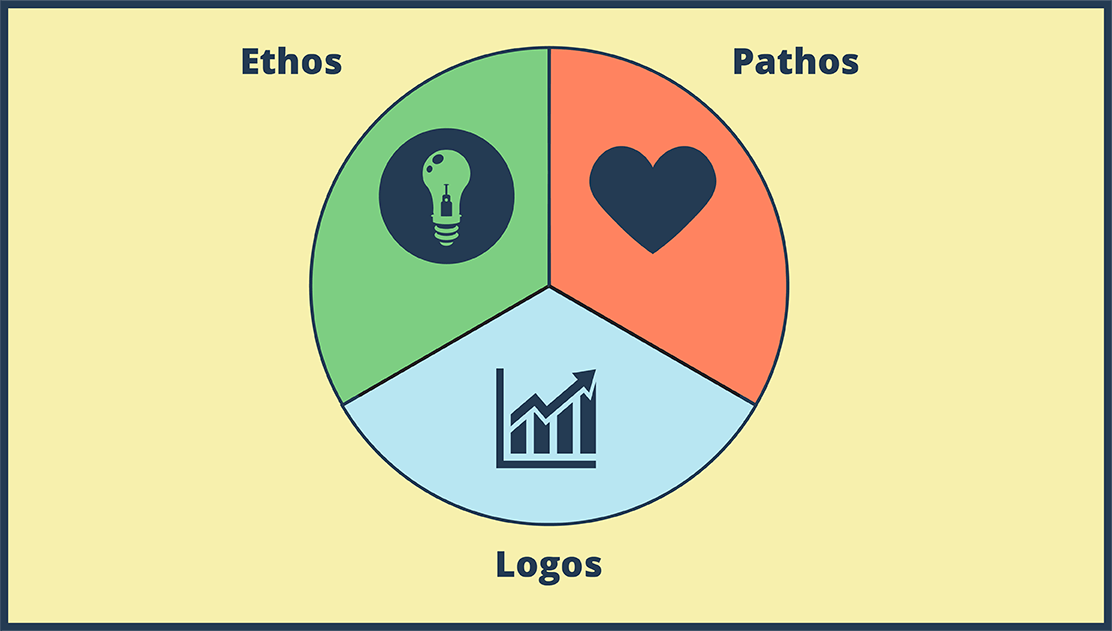This is a concept that was developed by rhetoricians from Aristotle, the Greek philosopher. It is basically from his idea, which suggests that persuasive arguments have three key elements, which are logos, pathos, and ethos. If you’re working on a spoken or written argument, you might want to consider using the rhetorical triangle to build ideas. This is because emphasizing each of these areas will make it easier for you to deliver successful reasoning, establish your credibility, as well as appealing the emotions of your audience.
In this article, we’ll take you through everything you should know about rhetorical triangle, including its key components. Continue reading to find out more about this triangle.
What is the Rhetorical Triangle?
This is a device that is applied in structuring and creating effective written and oral arguments. The focus is usually on three key elements, which are emotion, logic, and credibility. Rhetoric basically describes persuasive language, and it covers many theories, tools, and devices that people use to increase the impact of their words. According to Aristotle, a successful argument mostly depends on the components of the triangle.
Components of the Rhetorical Triangle
To organize and compose ideas within persuasive arguments, most speakers and writers prefer to use equilateral triangles for visual representation. The rhetorical triangle is made of six vital elements, three of which are the points of the triangle and the stand for different appeals that can be used in convincing an audience. These appeals are logos, ethos, and paths. The other three elements of the triangle comprise the lines connecting each of these points, and they basically connect the appeals. These elements are style, tone, and purpose. To develop an effective argument, you’ll need to consider these six elements.

Here’s an overview of these components:
Points of the Triangle
Here’s a quick overview of the three points of the triangle:
- Logos: This appeal presents the reasoning and the logic behind each claim. It also includes evidence and facts to support every point conveyed by the author.
- Ethos: This involves showing the credibility of the writer or speaker. The aim is to establish the authority of the author on the subject, as well as explain why the reader or audience should agree with the opinions or information provided by the author.
- Pathos: This appeal focuses on the emotions of the audience. It is considered to be the most effective appeal, and the focus is on creating an emotional connection between the speaker and the audience.
Sides of the Triangle
Here’s a quick overview of the three sides of the triangle:
- Style: This line connects logos to pathos, and it describes the method that a speaker or author will use to pass their message. It also covers the method they use in delivering their argument, and this can be a written essay, speech, or a story.
- Purpose: This connects ethos to pathos, and the three most common persuasive purposes of this line include negotiating, asserting, or effecting change.
- Tone: This line connects ethos to logos, and it represents the approach and attitude that the author uses when presenting their argument. The choice of words they use is an important factor, especially when conveying persuasive moods and establishing different tones, like ironic, complimentary, or vehement tones.
If you’re thinking of persuading others using written or oral language, you should consider using the rhetorical triangle. Even for students preparing for debates or writing essays, the rhetorical triangle is a vital tool to utilize. The tool is also vital for professionals, including consultants, fundraisers, marketing professionals, lobbyists, journalists, proposal writers, and lawyers.
